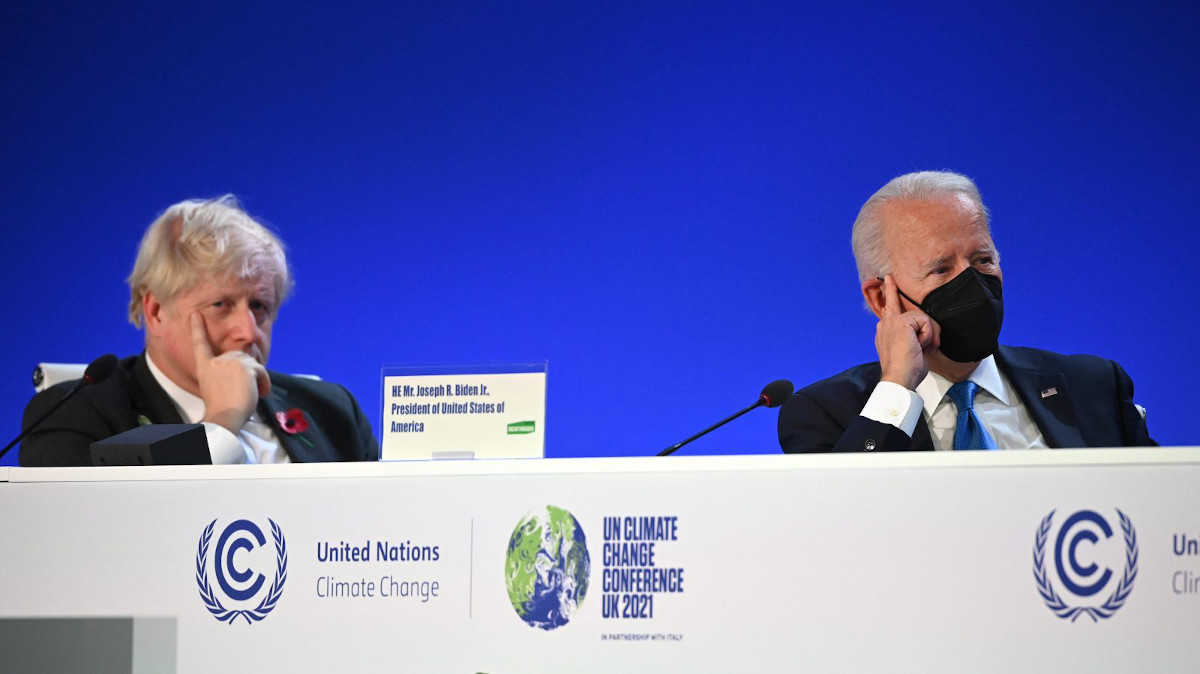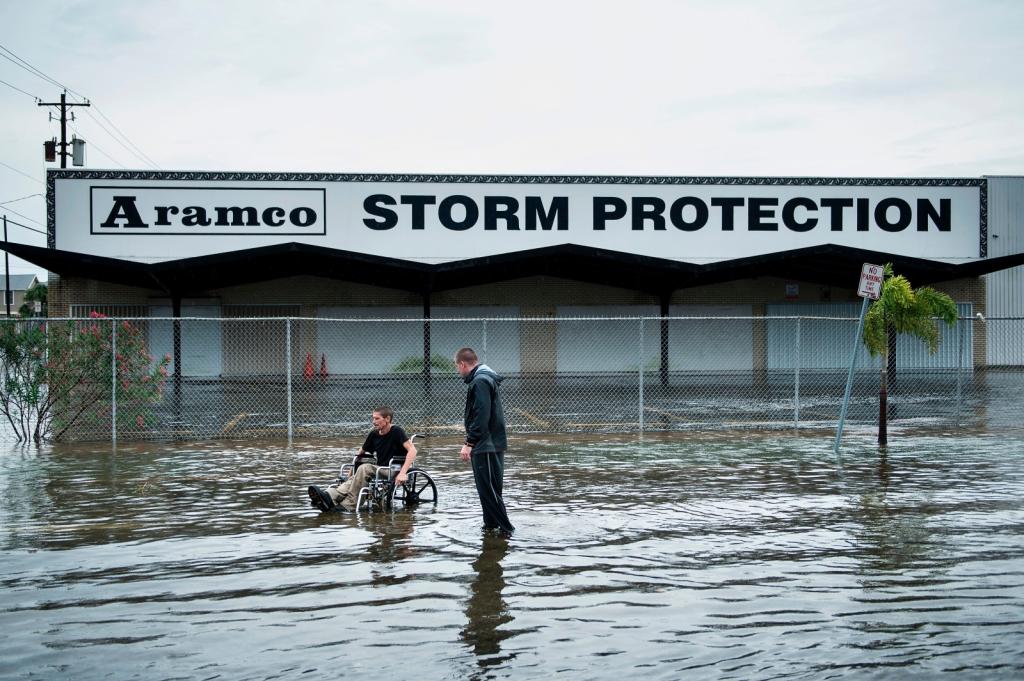World leaders and diplomats are gathered in Glasgow, Scotland, this month for the 26th meeting of the United Nations Framework Convention on Climate Change to tout their countries’ progress on controlling global warming. The Paris Agreement — the 2015 international treaty aimed at keeping temperatures “well below” 2 degrees Celsius (3.6 degrees Fahrenheit) — obligates almost every nation on the planet to slash its emissions as fast as possible. But the success of the treaty, and the possibility of a livable planet, rely on countries being honest about the true scope of their contributions to climate change.
A months-long investigation by the Washington Post, published Sunday, shows many nations are using faulty data as the basis for their climate pledges. The gap between the emissions numbers world leaders are reporting at COP26 and the true impact of their emissions on the atmosphere is huge — equivalent to somewhere between the amount of emissions produced in a year by a major industrialized nation (8.5 billion metric tons of greenhouse gases) and almost a quarter of humanity’s total annual contribution to the climate crisis (13.3 billion metric tons). The gap is wide enough to bump the world off course as it tries to rein in warming.
“The plan to save the world from the worst of climate change is built on data,” the report, which assessed the emissions numbers that 196 countries reported to the U.N. against independent scientific global emissions assessments, said. “But the data the world is relying on is inaccurate.”
A United Nations spokesperson told the Washington Post that “the application of different reporting formats and inconsistency in the scope and timeliness of reporting (such as between developed and developing countries, or across developing countries)” were to blame for the emissions gap, and acknowledged that it could do more to bolster accuracy.
Nations shrink the net emissions on their official balance sheets in two ways: by reducing the use of fossil fuels to lower absolute emissions, and by using natural resources like forests and peat bogs to offset continued emissions. The latter method is largely responsible for the emissions gap identified in the Washington Post report. Countries are overestimating how effective their efforts to offset their own emissions are. At least 59 percent of the emissions gap comes from the manner in which countries tally emissions from land. The rest came from systemic underreporting of methane and fluorinated gases — powerful contributors to global warming that are more potent than carbon dioxide.
Malaysia, for example, submitted a 285-page report to the U.N. that claims that its forests are absorbing carbon at a rate four times faster than nearby forests in Indonesia. Malaysia hasn’t planted a breed of super-absorbent trees; it just credits its forests with above-average carbon-absorbing capabilities and simultaneously undercounts the emissions produced by its palm oil industry. Malaysia claims that natural carbon sinks absorbed 73 percent of its emissions. Its true contributions to climate change are a different story. It was one of the top 25 highest emitters in the world in 2016.
Flawed accounting techniques are “rife in the developing world,” Jake Schmidt, senior strategic director of the Natural Resources Defense Council’s international program, told Grist, “but it’s common in the forest sector of the developed world, too.” For instance, Canada loses more old-growth forest to deforestation driven in large part by American consumption of toilet paper every year than any country except for Russia and Brazil. But some 80 million metric tons of emissions released by clearcutting of boreal forests aren’t counted in Canada’s official emissions report to the U.N., Schmidt said, citing a 2021 NRDC report, because Canada is operating under the assumption that the trees will grow back. There’s no guarantee that’ll happen at the speed and scale reflected in Canada’s accounting.
“It seems wise right now to have a healthy skepticism about country numbers, and promises,” Chris Mooney, a climate journalist at the Washington Post and a lead author of the report, said on Twitter, summing up the biggest takeaways from the investigation. “And it seems clear that we need much, much greater transparency about these numbers, and more independent checks.”
Part of the problem is that the United Nations Framework Convention on Climate Change, or UNFCCC, doesn’t have a lot of power to actually enforce the goals laid out in the Paris agreement. “There’s no true enforcement power,” Cinnamon Carlarne, a professor of climate change law and policy at the Ohio State University’s Moritz College of Law, told Grist. The institution’s power comes from the countries that belong to it, but none of those countries is strong enough on climate change to want the UNFCCC to take a tougher position on countries that are, knowingly or not, fudging the numbers on their greenhouse gas inventories.
“Our top 10 emitters are all still working to develop blueprints for addressing climate change,” Carlarne said. “So the idea that they could be in a position to encourage the UNFCCC to create a ‘hammer’ to either use against them in the context of mitigation or against developing countries who aren’t doing a great job of emissions reporting, it doesn’t seem likely.”
The tools that the UNFCCC does have are largely facilitative. It can work with states to make sure they have consistent access to good information on emissions and solid accounting guidelines.
The private sector and nonprofits are starting to play a role, too, by filling in the gaps where data is lacking, Schmidt, from NRDC, said. “There’s definitely innovations in the system to try to make sure that we can not only trust what governments bring forward but also have an independent way to assess that,” he said. Schmidt pointed to detailed satellite-based forest mapping as an example of this kind of innovation.
“I do think that civil society, nongovernmental organizations, like the Washington Post itself with this report — that’s going to be a powerful source of accountability,” Carlarne said. “Reputational harm is one of the biggest tools that can be used against these big state actors in this context.”
Schmidt, who is attending COP26 this week, told Grist that the Washington Post’s report is already having an impact on negotiations in Scotland. “I think it’s put increased pressure on what the actual impact of these policies are,” he said. “We’ve got a growing number of pledges and promises that put us within a closer reach of 1.5 degrees Celsius, but the reality is not yet delivering that.”



